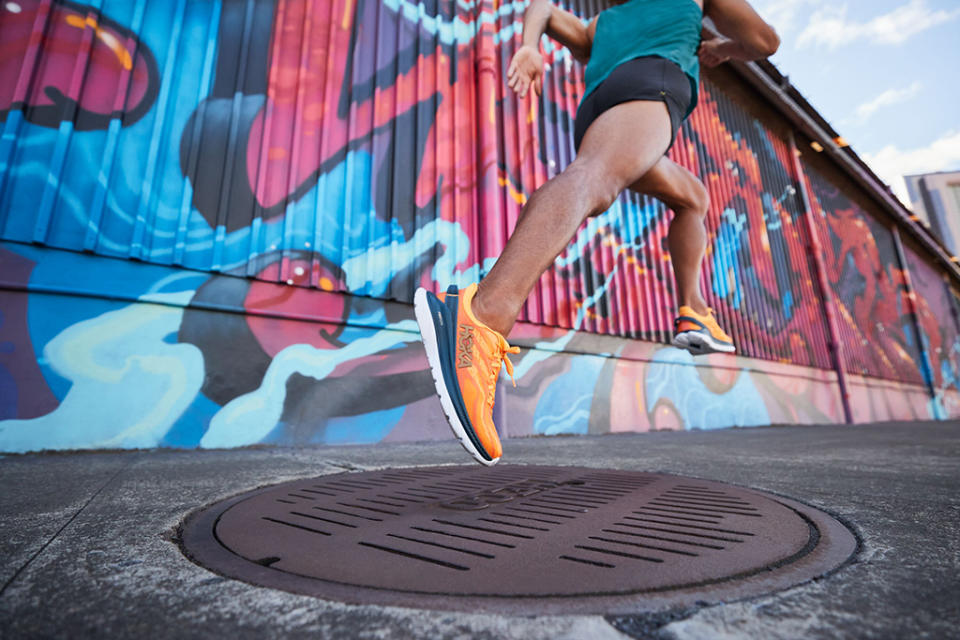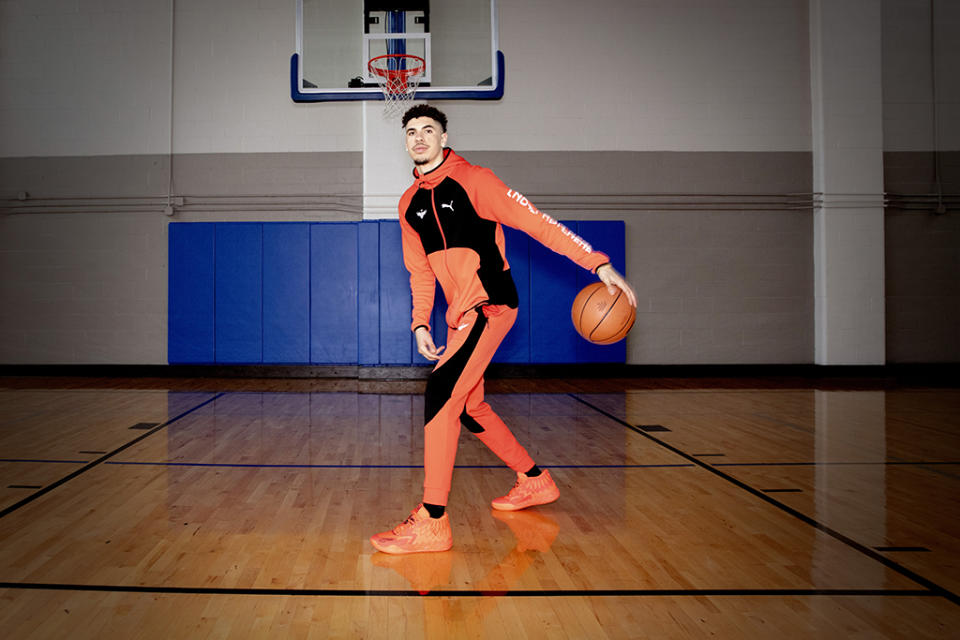Foot Locker CEO Dick Johnson on Hot Brands, Changes in Consumer Behavior & Inflation Concerns

Foot Locker Inc. is off to a strong start in its new fiscal year.
The retail powerhouse reported a total fiscal Q1 sales increase of 1% to $2.18 billion this morning, although comparable-store sales dropped 1.9%. With its performance for the quarter, Foot Locker Inc. beat earnings expectations with earnings per share of $1.37 and Non-GAAP earnings per share of $1.60.
More from Footwear News
Company executives — including chairman, president and CEO Dick Johnson — detailed its wins to start the year today, and offered a look into what’s in store for the back half of the year.
The discussion included its plan for store opening and closings that will makes its focus more hyperlocal, a continued broadening of its product and brand assortment (which included wins from Crocs and Puma, and confidence looking ahead in On and newcomer Hoka) and plans for secondary market platform GOAT and the FLX membership program.
Here, Johnson dives deeper into Foot Locker Inc.’s strategy for the rest of 2022 with FN, and reveals the potential greatest challenges and opportunities that are ahead.
How do you expect consumer behavior to change? What trends do you expect to emerge and what do you expect to disappear?
“Our team does a really good job of staying close to our consumers. I can tell you that a year and a half ago, we hadn’t sold a pair of Crocs in our stores, and now everybody’s got a pair of Crocs. It’s a fast-moving consumer, but one of the things that has become clear is that the consumer wants choice. As we’ve looked at the amount of space in open-to-buy devoted to Nike, we weren’t giving them the choice they were looking for. They really had to go and hunt for it. Now, when we talked about putting in some Adidas or New Balance or Crocs or whatever, there can be a real display which allows the consumer to have that choice to create their own self-expression.
We’re seeing a nice run in basketball right now. At the same time, the running silhouette and this casualization and comfort that really COVID brought us is here to stay. I think about those things, I think about some of the excitement that we see from new brands like Hoka and On, but at the same time, I look at old classic classics like Converse Chucks and kids are still there. Sneaker culture is certainly broadening. The consumer, both males and females, have a really high adaptability curve. They’re willing to try things and they’re going to move quickly. I’m not a trend-guesser, I’ll leave that to our team that works hard in the stores and stays connected with our consumers both digitally and in stores, but the behavior that I think is here to stay, a couple of them: classic comfort, people want to be comfortable in on their feet in the way they dress, and the ability to move from choice to choice and try different things.”
It looks like you’re doing the right things in a challenged climate. What are you most worried about?
“There’s a lot to worry about. We’ve never been in a position where we’ve seen this sort of accelerated inflation. And if the unemployment numbers change, you’re worried that if people are unemployed, how inflation takes a toll on them. But this choice, this expanded vendor portfolio gives us a broader price point range. It allows our consumers to pick and choose. And I do believe that they use our product in our segment, our category, if you will, as that accessible luxury. Even when the world is on fire around our core consumer, there’s nothing that they like better than putting on a new pair of Js [Air Jordans] or a new pair of kicks or a brand new Yankee hat — whatever it happens to be. That sort of signals to their friends and the rest of the world that, ‘Hey, the world’s in tough shape, but I’m okay.’ I truly believe that. That’s historically been what we’ve seen and I don’t think that’s going to change as we as we battle some of these things.”

Courtesy of Hoka
What kinds of consumers do you think you’ll attract with some of your newer brands?
“We haven’t done a great job of servicing a performance runner, and I think we’ll have the ability, certainly with Hoka and On and Brooks and Asics to do that a little bit better. But they all understand that their brand isn’t just about performance running. It’s about the casual interpretations of that as well. We’ll be able to broaden the spectrum with that casual person looking for a comfortable running shoe as well. I think it truly is a broadening, I think there is more choice for our existing customers, which helps drive up conversion.”
What confidence does the success of Adidas and Puma in your stores, as well as the growth of New Balance, Crocs and Converse, give you as the Nike mix changes?
“I’m confident about it. We’ve got the proof points. We talked about it in Q4 of ’21 call. We saw our non-Nike brands grow significantly, just the way we did in Q1. It’s not that we’re not going to have Nike — I need to continue to reiterate that — and we’ll work with our product flow. It’s not that there’s a hard cutoff. We’re continuing to ebb and flow product. The fact that we are seeing success as we’ve given our consumers more choice, that’s what gives me the confidence. The consumers haven’t said, ‘Oh, you’ve done so much less Nike product’ or ‘The Adidas product is up at the front of the store, I don’t want to go in there.’ They keep coming in, they keep shopping, and there’s more exploring going on now than there ever has been in their store — both digitally and physically. That’s the thing that excites me a lot.”

Courtesy of Puma
You spoke quite a bit during today’s earnings conference call about the basketball category. Why are you bullish, and who is the Foot Locker basketball consumer?
“Basketball is a style of shoe that comes in vogue, goes out of vogue, depending on what the bottoms that you’re wearing are, whether you’re in a running silhouette or basketball shoe. One of the things that give me great confidence around basketball is I look at a brand like Puma that signs an asset like LaMelo Ball, does a deal with us and we’ve suddenly created interest around basketball. I look at the work that Adidas is doing with Jerry Lorenzo and Fear of God and him heading up Adidas basketball, I think that that starts to roll. New Balance has got Kawhi [Leonard] who is not selling a ton of shoes, but he’s adding a really positive halo around the New Balance basketball effort. Styles ebb and flow, and I just think that we now have the ability to be more than just Nike basketball. We can be basketball to a lot of different consumers. Basketball hasn’t been hot as an entire category, but when you think about the products that have driven the heat in 2021: Air Force 1s, AJ1s and retros, that’s ultimately where sneaker culture got its start is products like that. Our team really believes that there is an up-cycle of basketball coming, we believe that offering more options in basketball will help fuel that cycle.”
What has Foot Locker learned from GOAT since making the investment in 2019? And how will those learnings play out in the forthcoming offer and promotion test?
“We’ve learned how important the secondary market is to our consumer. And we know that there’s a fair bit of crossover from the primary market to the secondary market. As we try to structure the redemption center in FLX and connecting it to product offerings on GOAT, we’re still working out the mechanics for the test, but I think that will just cement our belief that the sneaker ecosystem is getting bigger and broader, and the connection to the sneakerhead who buys one to rock and one to sell is a vital part of what keeps things moving forward. I’m really excited to get some commercial testing going, I just don’t want to get too far ahead of myself until we get the parameters and really figure out the final details.”
What would you say is responsible for the growth Foot Locker has seen with its FLX program? And how does Foot Locker intend to foster that growth?
“We’re going to foster it through a more robust redemption center. The whole point of FLX was to accumulate points so they can use them on experiences and things that we really haven’t been able to do during COVID. As we start to exit COVID and we’re able to create more experiences, I think we’ll see an even bigger uptick in our FLX numbers just because people will find out that there are cool things that they can do or see or places that they can’t go without some connectivity. It was really difficult during COVID. There was not a ton in the redemption center, so you didn’t have a lot of great talking points. But now our marketing teams are using it as an offensive weapon, and that’s really what’s fueling the growth.”
Best of Footwear News
Celebrate AAPI Heritage Month With Brands & More Projects That Support the Asian Community
Shop These Brands and Retailers That Are Supporting International Women's Day 2022
With Minimum Wage on the Rise, These Are Some of the Highest Paid Retail Jobs
Sign up for FN's Newsletter. For the latest news, follow us on Facebook, Twitter, and Instagram.

